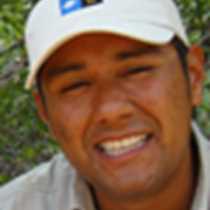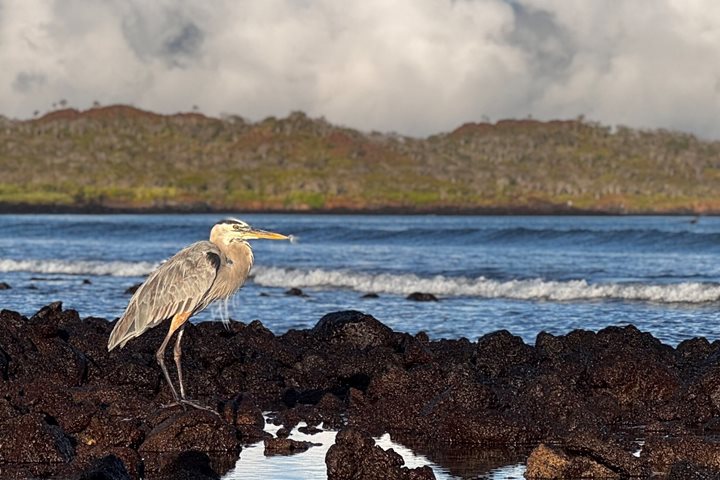Becoming a naturalist guide for Lindblad Expeditions ten years ago has been one of the most important changes of my life, and today I celebrated with our guests aboard the National Geographic Endeavour. As the time goes by, memories of devastated islands vanish, thanks to the conservation efforts of the Galapagos National Park over the last fifty years.
The landscape, flora and wildlife are slowly returning to natural conditions, as observed for the first time in 1535. Santiago is one of the islands that has been adopted by Lindblad Expeditions, and many guests throughout the years have made donations, contributing to the preservation of species, eradication programs for invasive species.
Espumilla beach was the first places to be recognized as a preferred nesting spots for sea turtles, since there are no feral pigs to devastate their nests, and this morning we landed here for our first hike. Unlike the other areas of the archipelago, the reflective green colored sand gives the impression of emeralds in the sand, washed in by the tide.
We hiked on the loop trail for almost one and a half hours before breakfast, and once we came back our captain Fausto Hinojosa sailed us around Buccaneer’s Cove. The rest of the morning was offered with many different options, including kayaking, Zodiac rides, and snorkeling.
We spent the afternoon in Puerto Egas, where some of us visited the black sandy beach to snorkel in the warm water, observing different kinds of fish and green sea turtles. After one hour, we slowly moved towards the tidal pools along the shore. At the collapsed lava tunnels, we spotted some fur seals relaxing for the last hours of daylight, just before fishing at night. The dazzling neighborhood of this amazing island was painted by a wonderful sunset at the end of the day.







